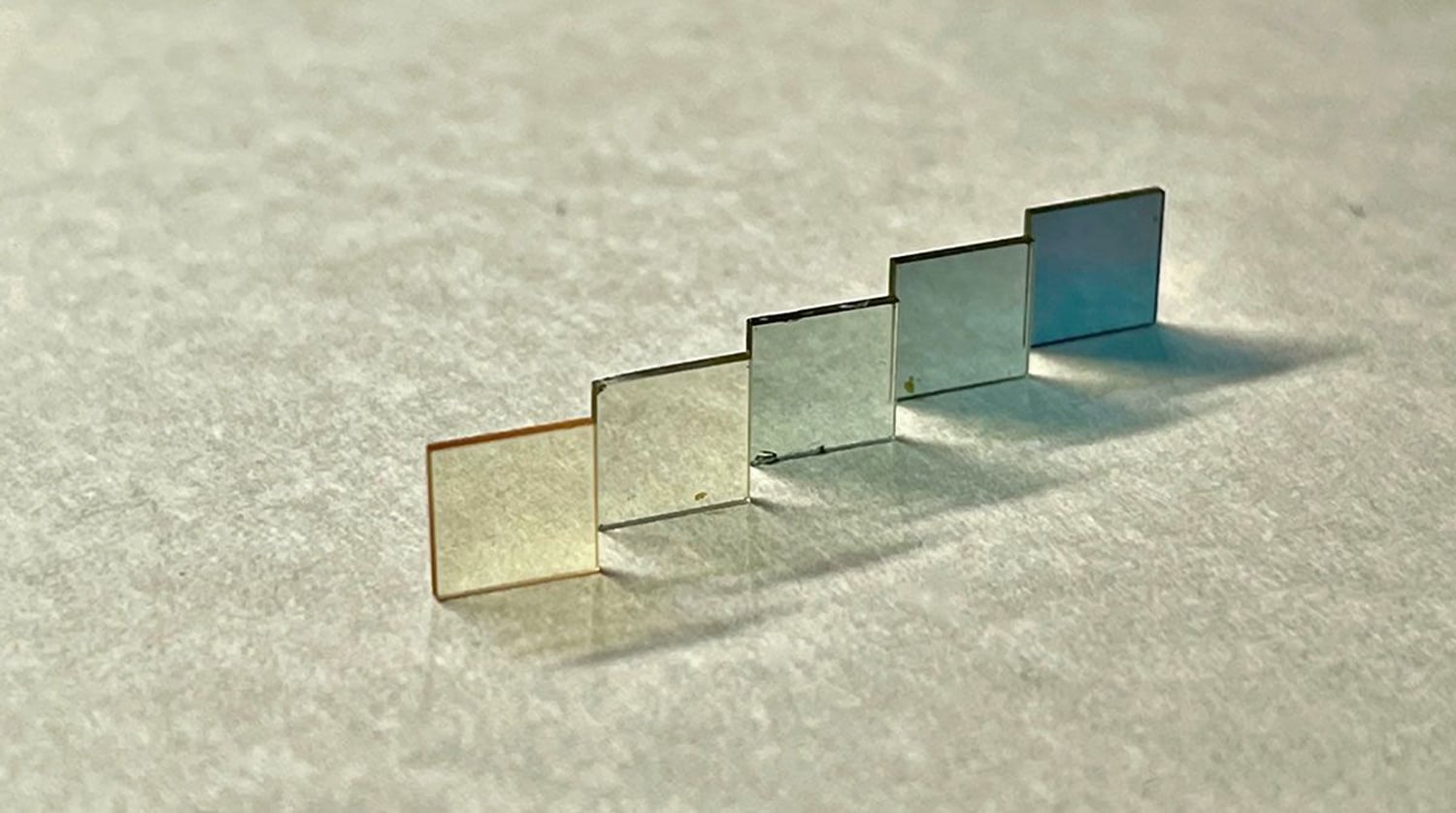
Metal oxides are an interesting class of materials intensively investigated nowadays. They have unique properties such as mechanical stress tolerance, high optical transparency, exceptional carrier mobilities, etc. The high optical transparency of metallic oxides allows it to be used in touch screens of smartphones and tablets, and solar cells.
Scientists from the Institute of Materials Science of Barcelona (ICMAB-CSIC) propose a new theory to explain the transparency of metal oxides. Until now, the accepted theory to explain this transparency pointed to the interactions between the electrons themselves.
This new theory suggests that such materials have a highly effective mass of electrons. The reason is the formation of polarons or couplings between the electrons in motion and the ionic lattice of the material, which is distorted around it.
As a result, the electrons are unable to oscillate rapidly following the electric field of light and hence allow it to pass instead of reflecting it.
The electric field of light influences the electrons to oscillate. As a result, they radiate light at the same frequency as the received light. It implies that the materials shine because of the reflection of light that reaches them. This also makes the materials opaque as no light can pass through them.
Some materials have heavier electrons that can not follow the oscillations caused by the electric field of light quickly and cannot reflect it. Still, they allow the light to pass through the material without any disturbance, resulting in a transparent material.
As mentioned above, the materials are mainly used to make touch screens in smartphones and tablets. Most of them are made of indium tin oxide (ITO), a semiconductor material.
As indium is a rare metal, there is a possibility that it could be finished before 2050, considering the increasing demands of touch screens and the expansion of photovoltaic energy. Hence, it is essential to find out the alternatives to the material.
Scientists at ICMAB-CSIC have studied thin films of the metal oxide strontium and vanadium oxide. They found that the thin layers of this metallic material, surprisingly, are transparent.
Josep Fontcuberta, a CSIC researcher at ICMAB-CSIC and leader of this study, said, “We think that the increase in the effective mass of the electrons is due to their coupling with the crystal lattice. The electrons of strontium and vanadium oxide and, in general, of metal oxides, move in a matrix of ions (positive and negative).”
“This lattice deforms with the moving electron, and this distortion moves with it. It would be like an electron dressed in a distortion of the lattice moving through the material. This coupling between the electron and the lattice is called a polaron, and it is heavier than the free electron, so the effective mass of the electron is greater, which would explain the transparency of the material to visible light since it cannot follow the oscillations of the electric light field and lets it pass through.”
“The study contains a comprehensive and unprecedented analysis of some of the electrical and optical properties that are described by the polaron scenario. In previous studies, it had been seen that there could be a relationship, but it had never been analyzed in depth. Furthermore, apart from checking the theory in strontium and vanadium oxide, it has been analyzed in other metallic oxides and some doped insulators, and their predictions are true.”
This new theory proposes that the interaction between electrons and the ion lattice plays a crucial role.
Fontcuberta said, “This study, among other things, is the result of a very exhaustive characterization of the electrical and optical properties of dozens of thin layers of the material in question. It is also the result of a very careful analysis of the data, which has revealed some discrepancies with scenarios and theories established long ago.”
“The patient and meticulous work of Mathieu Mirjolet, ICMAB predoctoral researcher, has made this possible. I do not know if it has been the most relevant discovery of my career since I do not know what is still to come, but I can assure you that it is one of the best ways to illustrate my genuine pleasure in looking at science and life from another point of view.”
These results come from a collaboration between ICMAB scientists Josep Fontcuberta and Mathieu Mirjolet, from the MULFOX group, with researchers from the University of Santiago de Compostela (Spain), the University of Freiburg (Germany), and the University of Frankfurt (Germany).
Journal Reference:
- Mathieu Mirjolet et al., Electron-Phonon Coupling and Electron-Phonon Scattering in SrVO3, Advanced Science (2021). DOI: 10.1002/advs.202004207
Continue reading Transparency of metallic oxides explained on Tech Explorist.
0 comments:
Post a Comment